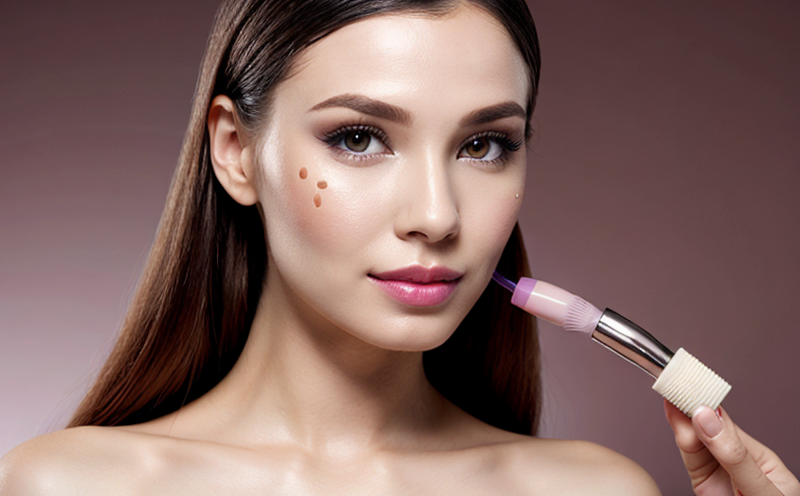In Vitro Cytotoxicity Testing for Cosmetic Ingredients
In vitro cytotoxicity testing is a critical component of cosmetic safety evaluation. This method involves assessing how a cosmetic ingredient or formulation affects living cells in an artificial environment, typically using cell lines derived from human tissues such as skin, hair follicles, and nails.
The primary goal of this testing is to identify potential harmful effects that could arise during the use of cosmetics on consumers. By employing advanced in vitro models, we can minimize the reliance on animal testing while ensuring robust data for regulatory compliance. This approach not only aligns with ethical considerations but also enhances product safety and efficacy.
The process begins with selecting appropriate cell lines that mimic the target tissue type. These cells are then exposed to various concentrations of the cosmetic ingredient or formulation under controlled conditions. Over time, observations are made regarding cellular health indicators such as morphology changes, viability rates, and metabolic activity.
Advanced technologies like flow cytometry, fluorescence microscopy, and live-cell imaging play crucial roles in quantifying these parameters accurately. The data collected helps determine the no-observed-adverse-effect level (NOAEL), which is essential for setting safe concentration limits within cosmetic products.
Compliance with international standards such as ISO 10993 and OECD guidelines ensures that our testing methods meet global regulatory requirements. Furthermore, collaboration between industry experts ensures continuous improvement in methodology refinement to stay ahead of emerging challenges in the field.
The advantages of adopting in vitro cytotoxicity tests extend beyond mere compliance; they offer significant benefits for both manufacturers and consumers alike. Reduced costs associated with traditional animal testing methods are just one aspect. Additionally, quicker turnaround times allow for faster product development cycles without compromising quality assurance processes.
For regulatory bodies, having reliable and reproducible data from validated in vitro tests provides confidence when making decisions about approving new cosmetic products. Ultimately, this contributes to a safer marketplace where consumers can trust that their chosen beauty products are rigorously tested before reaching store shelves.
Benefits
The adoption of in vitro cytotoxicity testing offers numerous advantages over traditional animal-based methods. Firstly, it significantly reduces the need for live animals in experiments, aligning with increasing global ethical concerns surrounding animal welfare.
Secondly, these tests are generally faster than full animal models due to shorter incubation periods and reduced complexity in experimental setups. This leads to accelerated timeframes for product development cycles, allowing companies to bring innovative products to market more quickly.
Achieving quicker results also means lower operational costs associated with extended testing durations. Manufacturers benefit from reduced overhead expenses while maintaining high standards of quality assurance throughout the production process.
Another key advantage lies in enhanced data reliability and consistency across multiple batches or different laboratory settings. In vitro tests provide repeatable outcomes, ensuring that each batch of a cosmetic product meets specified safety criteria consistently.
The ability to customize test protocols according to specific product formulations allows for precise evaluation of individual ingredients' effects on various cell types. This level of granularity enables manufacturers to make informed decisions regarding ingredient sourcing and formulation adjustments based on empirical evidence rather than guesswork.
Industry Applications
| Application Area | Description |
|---|---|
| Formulation Development | Identify optimal ingredient combinations and concentrations early in the development process. |
| Ingredient Safety Assessment | Evaluate individual components for potential adverse effects on human skin cells or other relevant tissues. |
| Packaging Material Compatibility Testing | Determine whether packaging materials interact unfavorably with product contents during storage. |
| Stability Studies | Assess the stability of cosmetic products under different environmental conditions, including temperature variations and light exposure. |
| Packaging Material Compatibility Testing | Evaluate the compatibility between packaging materials and product formulations to prevent contamination or degradation. |
Use Cases and Application Examples
In vitro cytotoxicity testing plays a vital role in ensuring the safety of cosmetic products throughout their lifecycle. During formulation development, this method helps identify optimal ingredient combinations and concentrations early on, streamlining the R&D process.
For instance, when developing a new facial moisturizer, researchers might first screen several potential active ingredients using in vitro tests to narrow down those most likely to contribute positively to skin health without causing irritation. Once promising candidates are selected, further detailed evaluations can be conducted on these specific components.
In another example, after formulating the final product, additional cytotoxicity studies may focus solely on individual ingredients rather than entire formulations if any concerns arise regarding particular additives. This targeted approach ensures that even minor adjustments do not compromise overall safety standards.
Stability testing is yet another area where in vitro cytotoxicity comes into play. By exposing samples to various environmental factors such as heat, humidity, and light over extended periods, researchers can monitor changes in cellular responses indicative of potential degradation or instability issues within the product.





